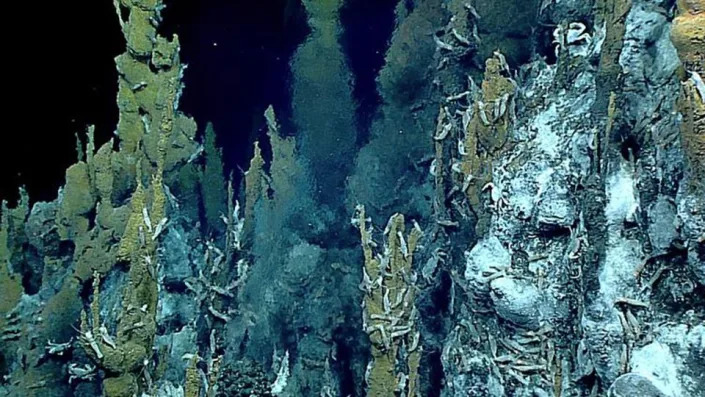Atul Dev
Thu, June 22, 2023

Photograph: Will Oliver/EPA
Maya K came to the US in 2002. She was born in Hyderabad in India, in a family considered to be untouchable by the upper-caste Hindus.
Castes are the hereditary classes of Indian society, each with its role and status defined in the scriptures of Hinduism. At the top of the ladder are the Brahmins, who claim an exclusive right to perform religious rituals; at the bottom are the Dalits, who were denied the right to education and consigned to the jobs that required hard labour, or were considered impure.
Related: Why California is taking on caste-based discrimination
Caste discrimination was outlawed in India at the time of the country’s independence, but in recent years Hindu mobs have lynched Dalits who try to assert their identity with pride. Earlier this month, in the most recent such killing, a 22-year-old was beaten and stabbed to death in Maharashtra, a state co-ruled by the Hindu nationalist Bharatiya Janata party of the prime minister, Narendra Modi, for celebrating the birth anniversary of BR Ambedkar, the Dalit economist and lawyer who wrote India’s constitution.
Modi, who is currently on a state visit to the US, has faced criticism during his tenure for the persecution of minorities, the collapse of constitutional institutions, and the imprisonment of government critics in India. His party, critics allege, aims to make India a Hindu nation, where Dalits, Muslims and other minorities are treated as second-class citizens. For some in the US, the repercussions continue abroad, making the pomp and circumstance of a Modi state visit feel personal.
“As Indians have come to this country,” Maya (not her real name), who lives in Washington DC, said, “they have brought this discriminatory mindset with them.”
Maya had heard snide comments about her caste and faced discrimination while pursuing her undergraduate studies in India, but she did not imagine that would continue in the US. “When I started working, I had an Indian American manager,” she told me. “As soon as he found out my caste, he started ignoring me completely, it got to a point when he would just pretend to not have heard what I said in a meeting,” she said.
In 2008, Maya founded Ambedkar Association of North America, named after BR Ambedkar. The group now has about 700 members spread across the US and Canada with the goal of helping the underprivileged communities back in India with financial support, and fighting against caste discrimination in the US. According to a Carnegie Endowment for International Peace survey about half of all Hindu Americans identify with a caste group.
“Caste is still not a protected category of discrimination in most of the Unites States,” she said.
Modi talks about eliminating caste in his public speeches – he recently said that “Indianness” is the only caste in India – but members of his own party support and protect upper-caste Hindu vigilantes. While hatred against minorities has been a frequent feature of India’s history, Hindu vigilantes have been emboldened by the ascent of Modi, whose political career was launched in 2002 amid a massacre of Muslims in Gujarat. Ever since, Modi has been one of the most divisive politicians in India, and those divisions are also beginning to animate the Indian diaspora in the US.
In July 2020, government regulators in California sued Cisco Systems, a tech conglomerate based in San Jose, accusing it of discriminating against an Indian American employee and allowing him to be harassed by two managers because he was from a lower caste. In May 2021, federal law enforcement agents raided a Hindu temple in New Jersey after hundreds of lower-caste workers accused a Hindu sect with close ties to India’s ruling party of luring them from India and forcing them to do unpaid labour. In August 2022, in a parade to mark the occasion of India’s Independence Day in Edison, New Jersey, the upper-caste Hindu organisers deployed a bulldozer tacked with the picture of Yogi Adityanath, a hardliner of Modi’s party and chief minister of the country’s most populous state, Uttar Pradesh, where a number of Muslim homes have been razed by bulldozers on his orders. That same month, at another parade in Anaheim, California, Indian Americans charged at protesters who were holding signs that read, “Abolish caste” and “Protect India’s Muslim lives”.

Califiornia state senator Aisha Wahab, center, with Thenmozhi Soundararajan, right, promote a bill which adds caste as a protected category in the state’s anti-discrimination laws, in Sacramento in March. Photograph: José Luis Villegas/AP
Maya has been involved with the gathering movement to ban caste discrimination in the US. In 2019, Brandeis University in Massachusetts added caste to its nondiscrimination policy. Since then, the California State University system; the University of California, Davis; Brown University in Rhode Island; and Colby College in Maine have followed suit. In 2021, Harvard’s graduate student union forced the university to add measures to prevent caste discrimination in their contracts.
Beyond the campuses, in February this year, Seattle added caste to the city’s anti-discrimination laws, becoming the first in the US to do so. Kshama Sawant, the Indian American member of the Seattle city council who wrote, presented and fought for the legislation in the council meetings told the press she had received thousands of emails in support of the bill.
Sawant herself grew up in an upper-caste family in western India, “listening to the pejorative things that are said about the lower castes”, she told me. Fighting caste, she said, was not just about correcting individual behaviour. “It is a societal system of oppression, which needs to be taken up at an institutional level,” she said. “Hence the need to make laws about it.”
Her campaign to outlaw caste discrimination in Seattle, Sawant said, faced widespread backlash from Hindu nationalist organisations in the US, such as the Hindu American Foundation and the Coalition of Hindus of North America. She credited the victory in the city council to the alliance of lower-caste and Muslim activists that supported her – a socialist. “Without that alliance, it wasn’t going to happen,” she said.
Rasheed Ahmed, the executive director of Indian American Muslim Council, told me that he sees an alliance of India’s persecuted minorities forming among Indian Americans. “Our Hindu nationalist opponents have financial backing and diplomatic support, they are probably larger in number and greater in influence, but we are standing together to counter them,” he told me. “Religious fundamentalism in India is something we all have to fight together; it is not the problem of one community.”
“Ambedkarite women have been working on this stuff for years,” Maya said, pointing out that Equality Labs, an organisation run by Thenmozhi Soundararajan, had conducted a quantitative survey in 2017 about caste discrimination in the US, which formed the basis of a 2019 congressional briefing on caste in Washington DC.
In March this year, Aisha Wahab, a member of the California state senate and the first Afghan American woman to be elected to a public office in the US, introduced SB 403, a bill that aims to ban caste-based discrimination in America’s most populous state.
“We will have to make alliances not just with socialists but Democrats and even Republicans, and we are prepared to do that,” Maya said. “Our goal,” she said, “is to outlaw caste discrimination in the entire United States – then we will be able to use our real names in public.”

























